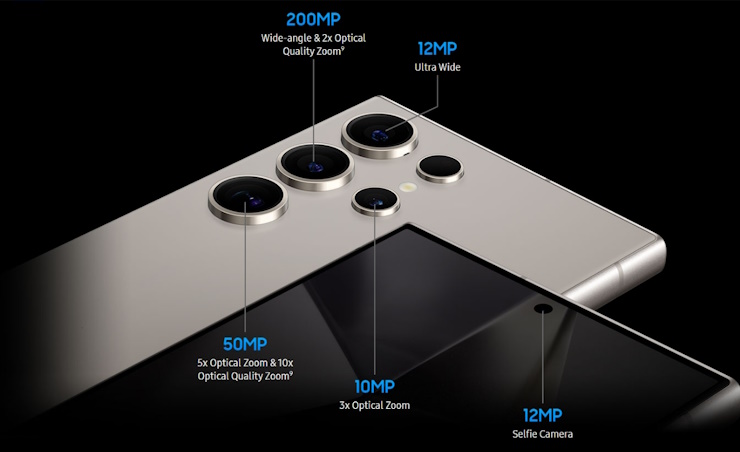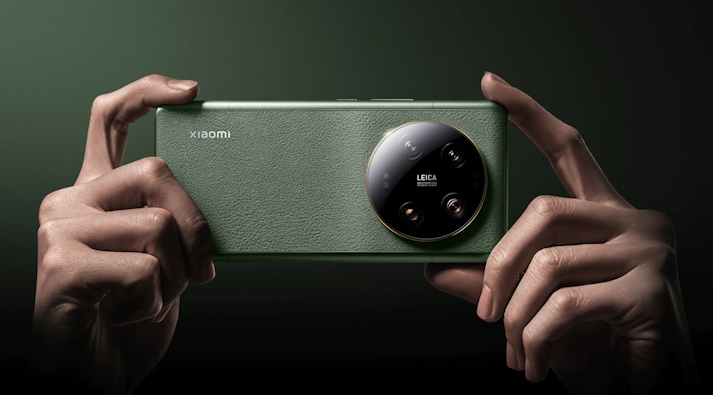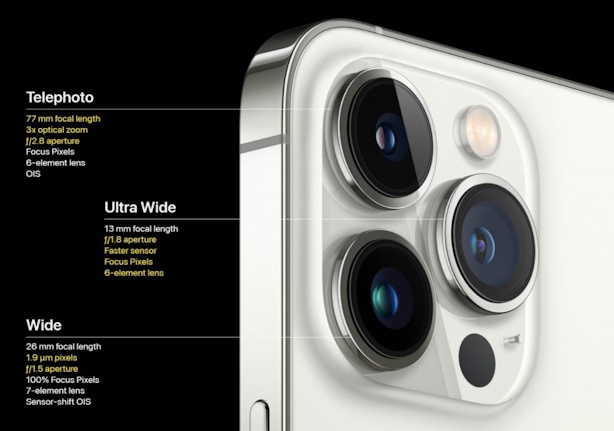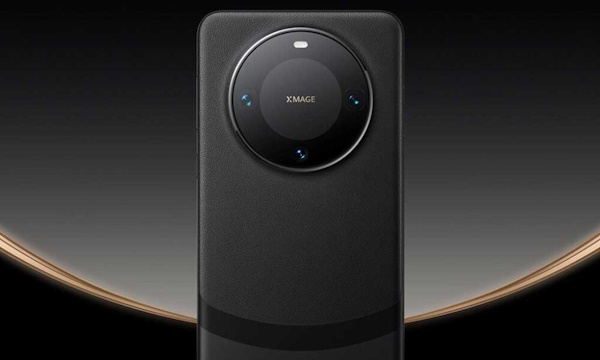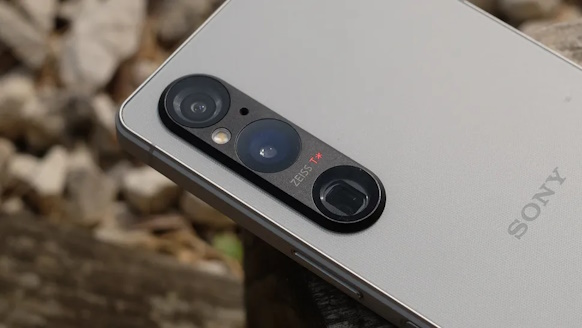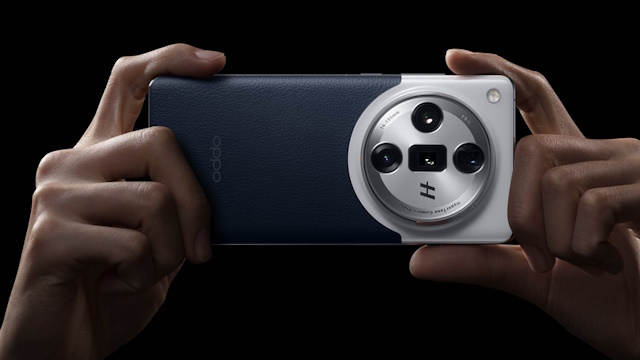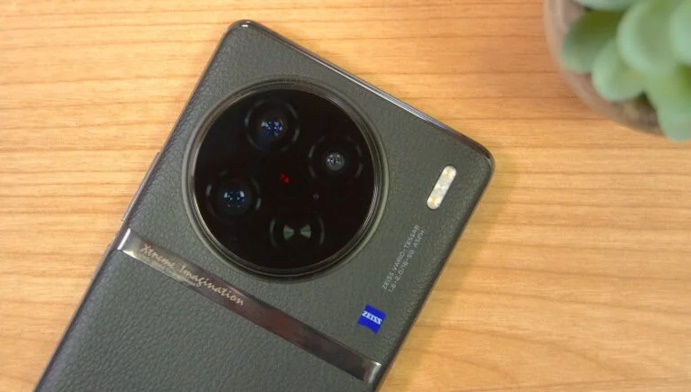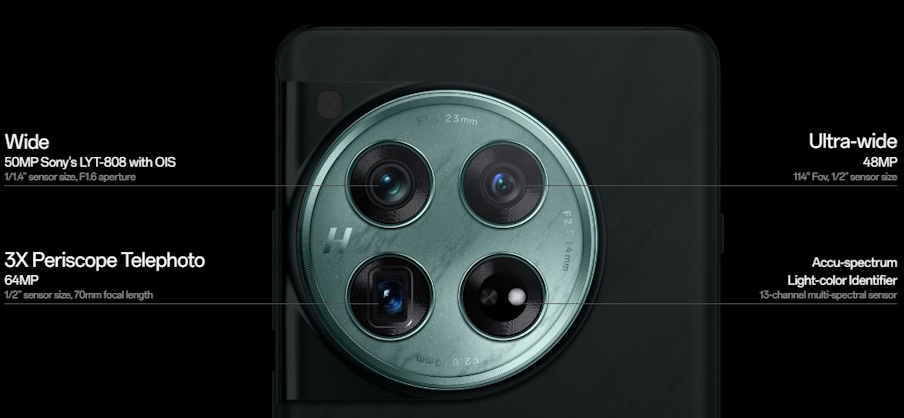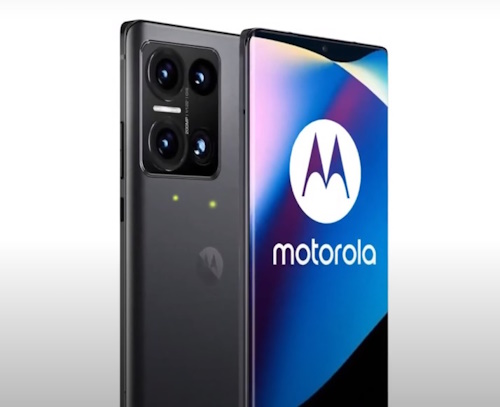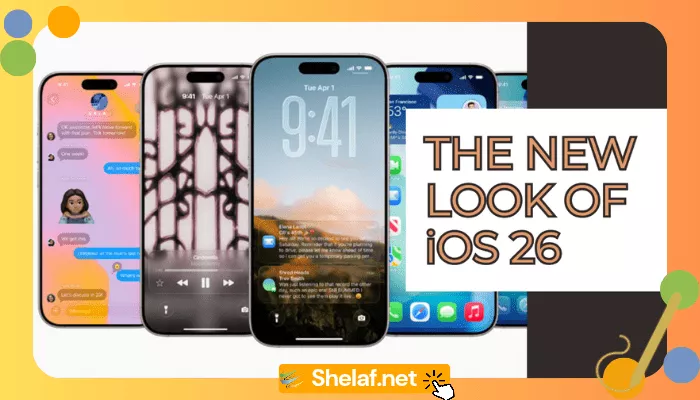In 2024, selecting the best camera phone extends beyond megapixels and marketing language. The compilation is ideal for photographers, vloggers, content creators, social media enthusiasts, and anybody else who enjoys recording exceptional moments. We’ll look at camera phones that have the adaptability, image quality, and features to enhance your job and unleash your creativity.
Contents
Choosing the Best Camera Phone: Factors to Consider
Before we dive into the list, consider these key aspects to match the phone to your style:
- Sensor Size: Larger sensors generally mean better low-light performance and detail.
- Lens Variety: Wide, ultra-wide, and telephoto lenses maximize your shooting options.
- Computational Photography: Software enhances detail, color, and dynamic range.
- Manual Controls: Some phones offer ‘pro’ modes, allowing you to refine your shots precisely.
- Video Features: Resolution, frame rates, stabilization, and cinematic modes all matter.
The Top Contenders for Best Camera Phones
1. Samsung Galaxy S24 Ultra: Camera Details and Versatility
- Camera Setup: Expect the S24 Ultra to build on its predecessor’s foundation. While the main sensor may see modest improvements, the key upgrade will be in telephoto lenses. Look for a wider zoom range, potentially pushing past the 10x optical zoom of previous models. This means capturing distant subjects with remarkable detail and clarity.
- AI Power: Samsung has always pushed its scene recognition AI. In the S24 Ultra, expect it to get even quicker and more accurate at analyzing complex scenes that include backlighting, high contrast, or moving subjects. This will result in photos that are automatically optimized for exposure, color balance, and detail retention.
- Astrophotography: Samsung’s dedicated ‘nightography’ modes are already impressive. The S24 Ultra has the potential to push this even further, possibly with longer exposure options specifically tailored to starscapes, the Milky Way, and other celestial wonders. A tripod or stable surface would still be recommended for the best results.
- Cons: Two common criticisms of Samsung phones are their tendency to oversaturate colors in the default mode, and the occasional overzealous smoothing of skin tones in selfie cameras. While you can adjust both with some settings changes, it’s good to be aware of these tendencies if you prefer a more true-to-life look.
Key Takeaway: The Samsung Galaxy S24 Ultra promises to deliver a camera system that excels in adaptability across a wide array of photographic scenarios, making it an excellent all-around solution for photographers.
2. Google Pixel 8 Pro: The Computational Photography Master
- Computational Prowess: The Pixel phones have always been less about megapixels or huge sensors, and more about what Google’s software can do with the images captured. In the Pixel 8 Pro, we can expect even more impressive results in several key areas:
- Low light: Even without the largest sensor, Pixel phones consistently outperform the competition when it comes to dimly lit scenes. This includes detail retention, noise reduction, and bringing out natural colors.
- HDR (High Dynamic Range): The ability to capture detail in both bright highlights and deep shadows is a Pixel hallmark. Expect this to be even further refined, with realistic-looking results even in extremely challenging lighting.
- Subject Isolation: Google’s software is excellent at recognizing people, pets, and objects, allowing for background blur (bokeh) even with its single-lens selfie camera. This gets even better with its rear lenses and improved portrait modes.
-
Exclusive Software: The Pixel camera experience is tied into Google Photos. Features unmatched on other phones are likely to expand:
- Magic Eraser: Seamless removal of unwanted objects with an easy-to-use tool.
- Photo Unblur: Restoring sharpness to old or blurry photos using AI.
- And more: Google frequently adds new post-processing features, often exclusively to Pixel phones.
- Videography Upgrade:
- Focus Transitions: Expect smoother, more cinema-like shifts of focus between subjects in video, a notoriously difficult feature to perfect.
- Tracking: Pixel 8 Pro will likely have an enhanced ability to lock focus on moving subjects, even in complex scenes.
- Cinematic Modes: Potential for new slow-motion features and pro-style controls for filmmakers.
- Cons: If you’re looking for the biggest sensor, longest zoom lens, or a camera relying on classic optics, the Pixel 8 Pro won’t prioritize those areas. Google’s strength lies in the software processing, not in pushing the limits of traditional camera technology.
Key Takeaway: The Google Pixel 8 Pro will be a powerful tool for photographers who value image quality driven by computational power, unique software tricks, and the advantage of Google’s continued development of industry-leading photo editing features.
3. Xiaomi 13 Ultra: Leica Partnership Goes Deeper
- Leica Evolution: Xiaomi and Leica’s partnership won’t just be about slapping high-quality lenses onto the phone. The Xiaomi 13 Ultra promises a deeper integration, echoing the feel of classic cameras with unique software features. These could include:
- Film-like Color Modes: Expect presets or adjustable color effects that mimic iconic Leica film stocks, offering rich, vibrant colors, or classic monochrome looks with deep blacks and nuanced tones.
- Composition Tools: Potential for grid overlays inspired by famous Leica rangefinder cameras, helping you perfect your framing like a master.
- Shooting Modes: Unique features that may emphasize detail and sharpness, or specific settings designed for street photography or dynamic scenes.
- Variable Aperture Enhanced
- Depth-of-Field Control: Xiaomi 13 Ultra’s variable aperture likely allows for even finer adjustments, from super-wide open for maximum background blur, to stopped down for sharper images across the entire frame.
- Lighting Flexibility: A variable aperture means more control over how much light hits the sensor. It lets you achieve a shallow depth of field even in bright sunlight, or ensure everything stays sharp in very low light situations.
- Black & White Excellence
- Dedicated sensor?: Rumors suggest the potential for a dedicated monochrome sensor, offering true-to-life black and white without filtering at the expense of color data.
- Leica Influence: Expect specialized black-and-white shooting modes that draw on Leica’s legacy of captivating monochrome photography. Imagine high-contrast filters, emphasis on textures, and dramatic lighting effects.
- Cons
- Selfie Focus: Xiaomi devices can sometimes prioritize overly bright selfies with aggressive smoothing. Keep this in mind if you value a more natural look in your front-facing photos.
- Leica Specificity: While the Leica-inspired features are likely to appeal to many photographers, they may feel niche. If you’re not drawn to this specialized style, other phones may offer a more generalized shooting experience.
Key Takeaway: The Xiaomi 13 Ultra aims to deliver a distinct photographic flavor born from its Leica collaboration. It will appeal to those who seek creative control, a unique aesthetic, and a love for black-and-white photography.
4. iPhone 15 Pro Max: A Focus on the Fundamentals
-
Image Quality Boost: Apple has historically used smaller sensors than its Android rivals, but with the 15 Pro Max, we can expect a significant upgrade in this area. This translates directly into several benefits:
- Low-light Photography: Larger sensors gather more light, leading to significantly improved detail and less noise in scenes with less-than-perfect lighting. Expect a big leap in evening, indoor, or nighttime photos and videos.
- Dynamic Range: This is the ability to capture details in both very bright highlights and deep shadows within a single image. A larger sensor will expand this range, leading to scenes that look more ‘true-to-life’ as you saw them.
- Video Refinement
- ProRes at Higher Resolutions: Apple’s ProRes video codec gives filmmakers serious control in post-production. Expect to be able to record ProRes at 4K resolutions, or even higher, on the iPhone 15 Pro Max. This takes up more storage but offers far more flexibility when editing.
- Cinematic Focus Shifts: Apple already does a decent job at smooth auto-focus for videos. The 15 Pro Max will likely refine this even further, with subject tracking and intelligent focus transitions between foreground and background that mimic the look of professional cinema cameras.
- Reliable & Polished: iPhones are known for their camera consistency. What you see on the screen is usually a close representation of the final image. This leads to:
- True-to-life Colors: iPhones prioritize natural color reproduction out of the box. While other phones might boost saturation, Apple aims for accuracy.
- Predictable Results: With iPhones, there’s less guesswork involved. You can trust that the camera will handle most situations well, with minimal need for tweaking settings or editing afterward.
- Cons:
- Zoom Limitations: While the telephoto lenses are likely to improve, they won’t compete with the extreme zoom capabilities seen on some Android phones.
- Fewer Experimental Features: Apple rarely leads the charge on bleeding-edge camera features like extreme night modes or AI-driven computational effects. They opt for refinement over revolution.
Key Takeaway: The iPhone 15 Pro Max will likely focus on delivering a tangible leap in image quality by upgrading its core sensor technology. Expect reliable, predictable performance, and a refinement of video features professionals will appreciate.
5. Huawei Mate 60 Pro: Pushing the Boundaries of AI Photography
- AI’s Edge
- XMAGE Technology: Huawei’s proprietary image processing system aims to deliver unprecedented detail and clarity, especially in tricky lighting conditions. Think of improved texture rendering, nuanced color reproduction, and a reduction in noise and artifacts, even when shooting in extremely low light.
- Editing Innovation
- Advanced Object Removal: Imagine a more powerful version of ‘Magic Eraser’ found in Pixel phones. Expect the ability to seamlessly remove distracting elements from your photographs with far greater accuracy and control, potentially handling even complex backgrounds seamlessly.
- Creative Effects Fueled by AI: Huawei’s AI will likely generate unique effects for your photos. These could include simulating different lenses, and lighting styles, or turning your images into stylized art with a single tap. This is an area where AI is constantly evolving, so we can expect surprise features.
- Variable Aperture Returns
- Natural Depth of Field: A variable aperture lets you control how much light enters the lens, directly influencing how blurry the background is in your photos (called bokeh). This ensures natural-looking background defocus in portraits and close-ups, without relying solely on software tricks.
- Cons
- Ecosystem Limitations: Due to ongoing restrictions, Huawei devices in certain regions may lack access to the full Google Play Store and Google services. This can impact app availability and integrations with some popular platforms.
Key Takeaway: The Huawei Mate 60 Pro will cater to photographers who want a phone that pushes the limits of what’s possible with AI-powered image enhancement and editing tools. With the bonus of the versatile variable aperture lens, it’s shaping up to be a compelling device for creative image-makers.
6. Sony Xperia 1 VI: A Filmmaker’s Phone
- Videography Maestro
- Manual Controls: Imagine full control over ISO, shutter speed, and white balance while recording video. This is vital for filmmakers who need to match specific camera settings or achieve a particular look.
- Pro-level Focus Features: Sony’s advanced autofocus technology will likely include object and eye-tracking, alongside features like focus peaking (visual aids for nailing manual focus) specifically designed for video work.
- Larger, Light-Sensitive Sensors
- The Cinematic Look: Sony cameras are known for their sensors, often exceeding the size of those found in rival smartphones. This translates to a more cinematic image quality, especially in low light, with a smoother-looking depth of field and better noise control.
- Low Light Prowess: Larger sensors let in more light. Expect the Xperia 1 VI to be a strong performer in night-time video and challenging lighting, delivering footage that’s detailed and clean.
- Real-Time HDR Previews
- Exposure Control: HDR (High Dynamic Range) video expands the range of brightness in a scene. Seeing an HDR preview while filming means you can precisely adjust exposure on the fly, ensuring you don’t lose detail in either highlights or shadows.
- For Advanced Shooters: This feature isn’t for casual users. It’s designed for those who want full control over their video’s aesthetic and have technical expertise.
- Cons
- Less Versatile: Sony cameras tend to focus less on ‘every possible feature’ and more on professional-grade tools. If you prioritize AI scene recognition or automatic modes to simplify shooting, this may not be ideal.
- Computational Limitations: Sony may lag behind competitors in AI-powered image enhancements like extreme low-light brightening or subject isolation found on other phones.
Key Takeaway: The Sony Xperia 1 VI will be the ideal tool for serious videographers and filmmakers who want a smartphone with cinematic image quality, advanced control over settings, and a focus on video-specific features, as opposed to computational tricks designed for still photos.
7. OPPO Find X7 Ultra: Telephoto Zoom Excellence and Hasselblad Flair
- Periscope Perfection: OPPO is known for its advanced periscope zoom lenses. These allow for incredible magnification while maintaining image quality. Key improvements in the Find X7 Ultra include:
- Further Reach: Increased optical zoom (likely exceeding the 5x of previous models), letting you capture clear images of even more distant subjects.
- AI Detail Enhancement: Even at extreme zoom levels, expect the software to work its magic. It will fill in missing details using advanced algorithms for a sharper, more impressive result than traditional digital zoom.
- Hasselblad’s Charm: The OPPO and Hasselblad partnership adds a unique flavor to your smartphone photography:
- Color Science: Hasselblad is known for its accurate, rich, and vibrant colors. Expect presets and modes that deliver a different, film-inspired aesthetic compared to other phones.
- Creative Modes: Beyond color profiles, anticipate specialized shooting modes developed with Hasselblad’s expertise. These could emulate vintage film looks, emphasize textures, or offer unique pro-level controls.
- Night Mode Refinement:
- Brighter But True-to-Life: OPPO will likely improve its low-light image processing. Nightscapes and dimly lit scenes may be brighter, but not at the expense of realism. Expect natural-looking shadows and reduced noise.
- Detail Preservation: Brighter photos in low light don’t mean less detail. Expect fine textures and elements to stay sharp and clear even when the light isn’t perfect.
- Cons
- Polarizing Design: OPPO Find series phones sometimes have unconventional designs with unique camera layouts, which might not be to everyone’s taste.
- Hasselblad Specificity: While the collaboration adds value for some, others might find its specialized modes and color science too specific and prefer a more neutral-looking camera app.
Key Takeaway: The OPPO Find X7 Ultra will appeal to photographers seeking the absolute best in telephoto zoom technology on a smartphone. It will also entice those desiring a unique creative style thanks to the Hasselblad partnership, and those who prioritize low-light capture without sacrificing a natural, detailed image.
8. Vivo X90 Pro+: Bigger Sensor, Professional Optics, Unmatched Stability
- 1-inch Sensor Plus
- Closer to a Dedicated Camera: Most smartphones have sensors far smaller than a traditional camera. A 1-inch sensor is a massive leap, bringing the following advantages:
- More Light = Better Image: Larger sensors gather more light, leading to greatly improved low-light performance, less noise in the image, and better detail capture overall.
- Natural Shallow Depth-of-Field: It becomes easier to achieve that creamy background blur (bokeh) without needing to rely on software tricks.
- Closer to a Dedicated Camera: Most smartphones have sensors far smaller than a traditional camera. A 1-inch sensor is a massive leap, bringing the following advantages:
- Zeiss Excellence
- Reduced Flares: Zeiss T* lens coatings are legendary in the optics world. This means a significant reduction in ghosting and lens flares when shooting in bright sunlight or scenes with strong light sources. It results in cleaner, contrasty images.
- Natural Color Science: Zeiss is known for accurate, realistic color reproduction. Expect the X90 Pro+ to avoid overly saturated or artificially boosted colors. Photos will lean towards true-to-life rather than ‘Instagram ready’.
- Stabilization Champion
- In-body Gimbal: While most phones rely on software stabilization, Vivo’s technology adds physical movement of the image sensor to counteract handshake. This is especially beneficial for video:
- Ultra-Smooth Footage: Even when walking or running, the video will appear very stable, mimicking the effect of a dedicated handheld gimbal.
- In-body Gimbal: While most phones rely on software stabilization, Vivo’s technology adds physical movement of the image sensor to counteract handshake. This is especially beneficial for video:
-
Cons
- Specific Strengths: Larger sensors aren’t perfect. The Vivo X90 Pro+ may not have the most extreme zoom lens or the wildest computational modes found on rivals. Its focus is on core image quality, optics, and video stability.
Key Takeaway: The Vivo X90 Pro+ will appeal to photographers who prioritize image quality that’s closer to that of a dedicated camera, especially for low-light shooting and natural bokeh effects. Its focus on professional-grade lenses and unmatched stabilization make it a fantastic video-capturing tool.
9. OnePlus 12 Pro: Hasselblad Touches, User-Friendly Excellence
- Hasselblad Finesse
- Natural Color Science: Expect the OnePlus 12 Pro to continue its partnership with Hasselblad, resulting in images that prioritize accurate and pleasing color reproduction, avoiding artificial boosting. Skin tones, landscapes, and product shots will benefit from this realistic approach.
- Practical Telephoto Options: While extreme zoom may not be the focus, the telephoto lens on the 12 Pro will likely strike a balance, offering useful magnification for portraits, capturing architecture, or details at a distance, all while delivering sharp results.
- User-Friendly Focus
- Streamlined Camera App: OnePlus is known for its intuitive interface. With the 12 Pro, expect a camera app that’s easy to navigate, with key settings quickly accessible without deep menus.
- Fast and Reliable: The focus (pun intended!) will be on ensuring focus lock and image capture is quick across all lenses. This is ideal for action shots, candid moments, and fast-paced situations where you just need to get the picture.
- Artistic Potential
- Tasteful Color Modes: While some phones overdo effects and filters, OnePlus will likely offer interesting color options that enhance your photos without seeming fake or heavily stylized. Think of subtle vintage film looks or creative monochrome settings.
- Cons
- Simpler = Fewer ‘Bells and Whistles’: If you’re chasing AI-powered night modes that turn darkness into daylight or the absolute longest zoom lens on the market, the OnePlus 12 Pro may not be it. The focus is on a polished experience, not experimental features.
Key Takeaway: The OnePlus 12 Pro will cater to photographers who want a reliable, no-fuss camera experience with a touch of artistic flair thanks to the Hasselblad partnership. It aims to deliver excellent core image quality with a straightforward interface, making it an ideal ‘everyday’ camera phone.
10. Motorola Edge 40 Ultra: The Value Surprise
- The Value Hero
- Strong Camera Setup: Motorola isn’t always known for leading in camera tech, but the Edge 40 Ultra has the potential to break that trend. Expect decent lenses (wide, ultrawide, and likely telephoto), and a focus on core quality instead of gimmicks.
- Attention to Color & Detail: Instead of pushing extreme effects, Motorola will probably prioritize nailing accurate colors and maximizing the level of detail the sensors can capture. This is especially valuable at this price point.
- Cropping Power
- High-Resolution Sensor: Rumor suggests a very high-megapixel count sensor which brings its advantage: flexibility to crop.
- Creative Reframing: Even if you didn’t perfectly compose the shot at the moment, you can zoom in after the fact and re-frame your image while retaining decent quality. This is useful if the phone lacks extreme telephoto zoom.
- Surprise Contender
- Exceeding Expectations: Motorola often focuses on the mid to budget-price segment. The Edge 40 Ultra suggests they could deliver a camera that punches above its price. Don’t expect it to outmatch the absolute top-tier flagships, but it could outperform similarly priced rivals.
- Cons
- Lacking Cutting-Edge Tech: Motorola’s focus on value means it’s unlikely to lead the charge in futuristic camera features. Don’t expect groundbreaking AI, the longest zoom, or innovative new modes found on pricier flagships.
Key Takeaway: The Motorola Edge 40 Ultra has the potential to be an excellent camera phone for those on a tighter budget. It will likely prioritize the fundamentals – color, detail, usable lenses – and offer a good resolution for cropping, potentially outshining other similarly priced phones in terms of image quality.
Choosing the Best Camera Phone for YOU: It’s All About Your Needs
- All-Arounder? Specialist? Do you want the ‘does-it-all’ phone (Samsung Galaxy S24 Ultra), or one that excels in a specific area like low-light (Google Pixel 8 Pro) or zoom (Xiaomi 13 Ultra)?
- Software Smarts: Raw image quality is important, but computational magic makes the difference. Consider ease of use and features like Google’s exclusive editing tools.
Beyond the Specs: Key Considerations
- User Experience: A streamlined camera app is crucial. Test phones in-store to see which interface works best for you.
- Ecosystem Integration: How well does the camera play with your other devices (laptop, tablet, etc.)? A smooth workflow matters!
- Longevity: Software updates are vital for the best camera phones. Manufacturers with good track records will keep your phone feeling fresh longer.
- Photo Style: Love natural colors (OnePlus, Motorola), bold looks (Samsung), or unique effects (Xiaomi, OPPO)? Match your aesthetic.
Conclusion: Unleash Your Inner Photographer!
The best camera is the one that inspires you to create! Each of these phones brings impressive tools; now it’s time to pick yours:
Ready to buy? Search for these top camera phones at trusted online retailers like Jumia NG, Konga NG, and Amazon Global Store, and compare prices to find the best deal!
Which phone sparks your creativity? Upgrade your vision and capture stunning images with the best camera phone!


